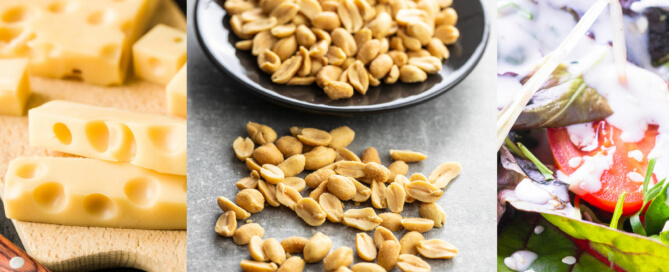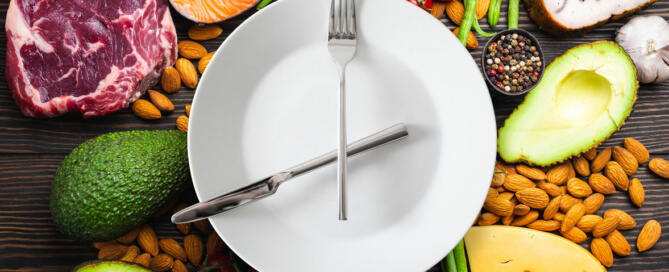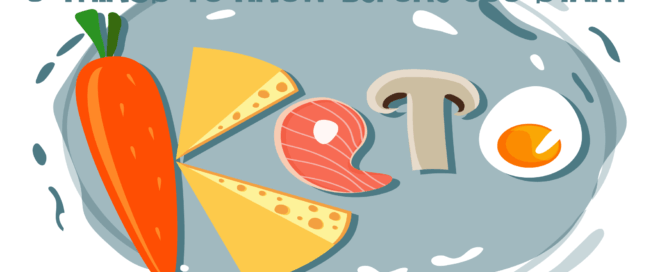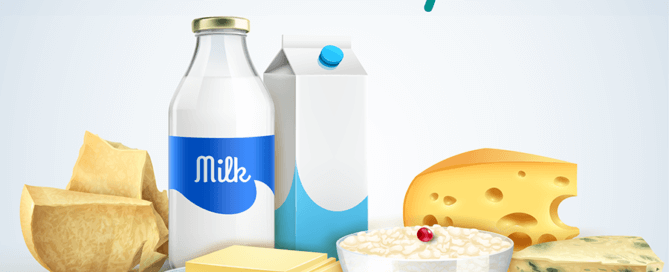What Happens When You Eat Too Much Fat on Keto?
Amy Berger
There are seemingly infinite ways to do a “keto” diet. Ask fifty different doctors and nutritionists and you’ll get fifty different pieces of advice. To some people, keto means keeping carbohydrate intake very low. To others, it means drowning their food in fats and oils. Fat, fat, fat—the more the merrier! And while fat is embraced on keto, there is such a thing as too much fat. So what happens if you eat too much fat on keto?
What are your goals?
The best way to implement a ketogenic diet depends on your individual goals and where you’re starting from. If you’re carrying a hundred extra pounds or looking to reverse type 2 diabetes or metabolic syndrome, the approach to keto that will be most effective for you will be different from the approach that’s best for a competitive athlete or a child with epilepsy. Different goals, different strategies.
This is why getting generalized information about keto from the internet can be a bit fraught. There’s no right or wrong way to do keto; it’s all about what you’re trying to accomplish. Following advice intended for someone whose situation is completely different from yours might not work so well for you. In fact, it might move you further from where you want to be.
More “LC” than “HF”
It would be nice if fat were unlimited on keto and if calories didn’t matter, but unfortunately, that’s not the case. You’ve probably seen the abbreviation “LCHF” (low carb, high fat) used together with keto. But if losing body fat is your main goal in following a keto diet, thinking of it as “LCHF” can be misleading.
Here’s how it works: what causes your body to shift from being fueled mostly by carbs to mostly by fat is cutting way back on carbs. When there’s very little carbohydrates coming into your body, your body has to find an alternative fuel source, and the one it will choose to use is fat.
So that’s step 1: cut the carbs and get your body to burn fat. But if you want to burn your stored body fat, then step 2 is not overdoing the fat in your food. Once your body has switched over to fueling on fat rather than carbs, it has a choice between burning the fat that comes from your plate or the fat that’s stored in your hips, thighs, arms, and backside. Remember: having your metabolism primarily fueled by fat doesn’t automatically mean you’re going to lose body fat. “Burning fat” is not the same as losing fat.
Don’t get confused here. Keto is a high-fat diet, but the thing to understand is that when your main goal is fat loss, not all of that fat should come from your food. You want some of it to come from your own body. That is, internally, your cells are eating a high-fat diet, but not all the fat is coming from your plate. This is one of the most common obstacles people run into when they’re struggling to lose fat on keto: they’re following advice to put butter and oil in their coffee or they’re adding lots of extra fat and oil to everything in order to “hit their fat macro.” With all that fat coming in from food and beverages, their body has no need to tap into their stored body fat for fuel.
Where did fat loading come from?
It’s no secret that eating rich, fatty foods is one of the pleasures of following a keto diet. You no longer need to live in terror of egg yolks and crispy chicken skin, and while turkey bacon is handy if you don’t eat pork for religious or cultural reasons, if pork is part of your diet, you can have the real thing, guilt-free.
But adding fat and oil to everything for the sake of reaching an arbitrary fat macro or percentage of calories from fat in your diet is brand new. Low-carb diets have been around since at least 1825, long before there were smartphone apps, macro calculators, and MCT oil fat bombs. People were successful in losing weight and improving their health before these things even existed.
Until recently, it was understood that a low-carb diet was just that: low in carbohydrate. Emphasizing a very high fat intake wasn’t part of the process. The first medically therapeutic ketogenic diets were very high in fat, but these weren’t intended as fat loss diets; they were treatments for children with epilepsy. The kind of diet that prevents or reduces seizures is not the same diet that’s best for weight loss.
Common culprits
So where does “too much” fat come from on keto? It depends on what someone typically eats, but it’s pretty rare for fatty meats to be the problem. Whole food animal proteins—fatty steaks or pork chops, salmon with the skin—are not usually the issue. More often it’s the concentrated or isolated fats and oils that we add to food: mayonnaise, butter, cream cheese, coconut oil, etc.
Heavy cream is an especially common culprit. (Are you having a splash of cream with your coffee or a splash of coffee with your cream?) Are you one of the rare humans who can stick to 2 tablespoons of ranch dressing, or is your portion more like half a cup?
Also be careful with nuts and nut butters: these are very common trigger foods. Consider using nuts and seeds as a garnish but not as a snack or staple food. Don’t sit down on the couch with a bag of nuts or a jar of nut butter. Use chopped or sliced nuts to add crunch to a salad or as a garnish on proteins or vegetables. The same goes for cheese. If you’re a cheese junkie, consider reserving cheese for use as a garnish and flavor enhancer rather than as a snack on its own. Sprinkle shredded cheese on a salad or low-carb tacos and fajitas. Top a burger patty with a slice. Don’t sit down with a whole block of cheddar or gouda and a knife. Thirty minutes later it’ll be gone and you’ll wonder where it went.
Keto treats can be problematic, too. Keto brownies, muffins, cookies—even if the net carbs are low (and net carbs can be a problem all on their own), extra fat adds up quickly from almond flour, coconut butter, cream cheese, etc. If you’re having a hard time losing excess body fat, these things aren’t totally off limits, but be aware of how much of them you’re having and how often. They can make keto easier and more enjoyable to stick to for the long term, but overdoing them can be a roadblock to easier fat loss.
Don’t be afraid of fat
Don’t misunderstand what you’ve read here. You don’t need to fear fat. Just because fat isn’t unlimited on keto doesn’t mean you have to time travel back to 1987 and live on canned tuna, rice cakes, and egg white omelets cooked in nonstick spray. All it means is that if you know you have a heavy hand with added fats and oils, be aware of how much extra you’re adding and whether that might be standing in the way of you reaching your fat loss goals.
And please, follow your appetite. Some days you’ll feel hungrier than on other days and it’s completely normal for your calorie intake—including from fat—to vary from day to day. What’s a little strange is expecting your hunger level to be exactly the same every day, every month, all year long, regardless of your activity level, sleep quality, and ladies, where you are in your cycle. Some days if someone were to look at your food, they might think you’re eating a low-fat diet, while other days, you’re gobbling up ALL THE FAT. And that’s fine. Things generally even out over time, as long as you’re not adding gobs of extra fat and oil to everything because an app told you to.
Reaping the metabolic benefits
If you’ve been overdoing dietary fat, don’t stress! First, it’s easy to course-correct. And second, even if your fat intake has prevented you from losing weight or you’ve lost only a little bit compared to the total you’re looking to lose, you are still likely getting the cardiometabolic benefits of a low-carb diet.1 Remember, keeping carbs low is what prompts the hormonal shift to keep your blood sugar and insulin lower. Research has shown that even if your weight doesn’t change much, you can reverse metabolic syndrome and have massive improvements in type 2 diabetes.2,3 So on the inside, you’re still benefiting from a low-carb way of eating even if you’re disappointed with changes in your weight.
Shifting focus from “keto” to low-carb is a good start, and reframing LCHF to mean low-carb healthy fat is even better. So enjoy those delicious fats on your keto diet, but be mindful of whether you’re going overboard if you’re having trouble losing weight.
Sources
- Feinman RD, Volek JS. Low carbohydrate diets improve atherogenic dyslipidemia even in the absence of weight loss. Nutr Metab (Lond). 2006;3:24.
- Hyde PN, Sapper TN, Crabtree CD, et al. Dietary carbohydrate restriction improves metabolic syndrome independent of weight loss. JCI Insight. 2019;4(12):e128308.
- Gavidia K, Kalayjian T. Treating Diabetes Utilizing a Low Carbohydrate Ketogenic Diet and Intermittent Fasting Without Significant Weight Loss: A Case Report. Front Nutr. 2021 Jun 28;8:687081.


















